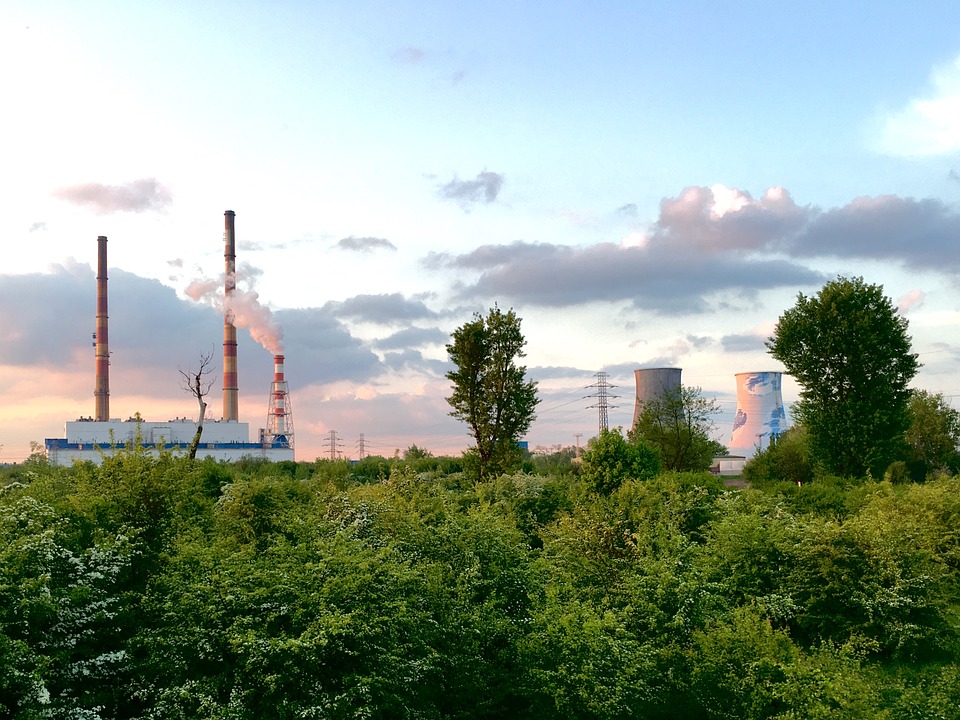A closer look at the difficulties associated with measuring and verifying heat use through T-RECs.
In NorthWest Engineering Service sits a metal T-Rex named Bruce, made of recycled recliner parts. We used him to help attain a “Green Business” award, receiving credit for art made from repurposed materials.
What’s that have to do with the T-RECs in this article? More than the homonym. Renewable Energy Credits (RECs), which accurately track where monetary incentives associated with solar, wind, and biomass projects belong, have been growing in popularity over the last decade. A REC is defined as 1 MWh of electricity generated from a renewable source. A Thermal REC (or T-REC) is the equivalent, but with heat. RECs and T-RECs can be bought and sold and are commonly used to add points toward LEED certification or to help a company meet its environmental responsibility goals.
T-Rex T-RECs

Bruce the T-Rex, made from recycled recliner parts by Bruce Gilpin.
One of the main reasons RECs are tracked is to ensure they aren’t being double-counted, i.e. that the biomass power producer and the energy consumer aren’t both claiming the same tax incentive. In addition to tracking the heat credits, T-RECs are defined specifically enough to limit non-renewable station service, or the power used to operate a plant, from being counted. In other words, a company can’t simply inject fossil-fuel generated electricity to vaporize water when it would be more efficient to use recuperation from biomass.
The need to measure thermal energy extends beyond solar, biomass, or geothermal projects. Even for non-renewable fuels, tax incentives have been tied to district heating and combined heat and power (CHP), or cogeneration projects, and both owners and taxpayers deserve assurances the green technology they funded is providing the promised return on investment.
Electrical power measurement at this scale is easy to measure and track, so RECs are relatively straightforward. This is not true for T-RECs, or indeed with the heat associated with many typical CHP projects, especially those associated with distributed energy generation on a customer site. This is for two reasons—determining whether the heat is really being used and measuring it accurately.
Where is the heat going?
The graphic below shows one example of a combined heat and power generation system at a customer site. These types of systems offer the promise of approximately 30-40% reduction in fuel and carbon dioxide emissions, compared to having electricity delivered via the grid and getting hot water from conventional boilers. The graphic is shown for a fuel cell system, but similar savings can be found for more standard technologies like reciprocating engine and gas turbine based power generation systems. The key is capturing the waste heat.
However, if the customer cannot use the heat, the cogeneration system must reject it. Unfortunately, this is all too common. Typical CHP systems tend to provide more heat than electricity, or at best, about equal amounts. But commercial buildings tend to have proportionally much higher electrical needs. The key to fully utilizing CHP systems is siting them in buildings like hospitals, hotels, pools, and food preparation centers where heated water is frequently used.
But even for ideal CHP sites, there are plenty of times when the heat must be rejected. And many facility engineers reading this article can attest to how often these types of systems don’t work the way they are advertised and are simply “shunted” out of service to reduce alarms. When placing equipment to measure the heat, it cannot simply be at the CHP system hydronics output loop. The appropriate instrumentation needs to be placed near where the customer heat is being utilized, near the boiler pre-heater, for instance, to account for the heat lost in transit or intentionally rejected.
T-RECs the process

A combined heat and power generation system.
Can the heat be measured?
The second difficulty is related to measurement accuracy. Let’s start with a problem that will be obvious to anyone who’s looked in a hydronics line six months after being placed in service. With all that “scum” in there, how can you be sure the flow and temperatures are as accurate as they were when the system was commissioned? The answer, of course, is they are not, and the system must be re-calibrated or otherwise modeled if T-RECs are going to be sold for years.
But even on day one with a pristine system, measuring heat accurately is not a slam dunk. Let’s take the example of a customer’s water being raised from 70°F to 80°F, a common scenario for onsite thermal recovery systems, preheating a swimming pool or boiler. Using the typical values and the accuracy associated with good equipment shown, three cases have been tabulated, for nominal, maximum, and minimum conditions. The calculated values range from 268 kBtu/hr to 771 kBtu/hr. This is an uncertainty of -46% to +55% compared to the nominal value.
The low temperature rise is the culprit. Designing the system to utilize higher grade heat, if possible, would help. However, it’s even more vital to use a dedicated Btu meter, with matched, calibrated RTDs, with a flowmeter chosen for the appropriate range and fluid.
In summary, utilizing heat, either from fully renewable sources or in cogeneration plants, is an important tool for reducing our reliance on fossil fuels. Ensuring accurate measurements, regularly checking fluid properties to account for degradation, and inspecting the system periodically to make sure the heat is being used per design, will help assure the customers (building owners and taxpayers) are getting what they paid for.
Tom Prevish T-RECs
This column is condensed from a CxEnergy 2017 presentation by Tom Prevish, president of NorthWest Engineering, Inc., in Portland, Oregon. He’s been working on energy and power generation projects for commercial and residential buildings for 19 years, with prior experience in the aerospace industry. He received his doctoral degree from Penn State University and is a registered professional engineer in Pennsylvania, Oregon, and Washington. Prevish will present “Incorporating Distributed Energy Generation Projects into Whole Building Commissioning” at CxEnergy 2018, the premier event in building commissioning and energy management, April 23–26 in Las Vegas.



